#American Tractor Museum
Explore tagged Tumblr posts
Text
Traveling for Faith
We all travel for different reasons at different times of the year. This December brought a special trip to see the Christmas Country Church Tour. The tour covered over 30 churches in Bollinger, Cape Girardeau, Perry, and Ste Genevieve Counties in Missouri. While of course we couldn’t make it to all of them, my husband Keith and I made it to nine or ten! We heard Christmas music, sampled dessert…

View On WordPress
#3rd oldest Presbyterian church west of the Mississippi#agricultural treasure#Agricultural Treasures Guidebook#American Tractor Museum#Apple Creek Presbyterian Church#Arley Bigbilger#Bed and breakfast#Belique Cemetery#birth of our Savior#Bollinger County MO#Brazeau Presbyterian Church#Bueckman Store#Cape Girardeau County MO#celebrate#celebration of Jesus Chirst#Charles Lindbergh Field to Flight#Christmas#Christmas Country Church Tour#church tour#churches#Concordia Lutheran Church Frohna#Concordia Lutheran Church Rrohna#dessert#eBook#Eggers & Co. General Store#Ellen Frye#faith#Farrar General Market#Farrar General Store#Farrar MO.
1 note
·
View note
Text




Grace Thurston Arnold Albee (July 28, 1890 – July 26, 1985) was an American printmaker and wood engraver.
During her sixty-year career life, she created more than two hundred and fifty prints from linocuts, woodcuts, and wood engravings. She received over fifty awards and has her works in thirty-three museum collections. She was the first female graphic artist to receive full membership to the National Academy of Design. Via Wikipedia
Grace Albee at work in her studio, © Peter A. Juley & Son Collection, Smithsonian American Art Museum J0091734
Grace Albee, Rose, 1936, wood engraving on paper, image: 6 1⁄8 x 4 in. (15.4 x 10.2 cm), Smithsonian American Art Museum, Gift of Ruth and Jacob Kainen, 1989.77.2
Grace Albee, The Storm--Old Chelsea District, N.Y., 1946, wood engraving on paper, sheet: 7 1⁄2 × 8 5⁄8 in. (19.1 × 21.9 cm) image: 4 5⁄8 × 5 7⁄8 in. (11.7 × 14.9 cm), Smithsonian American Art Museum, Gift of Betty Minor Duffy, 1976.83
Grace Albee, Entangled Tractor, 1945, wood engraving on paper, image: 4 5⁄8 x 8 1⁄8 in. (11.6 x 20.5 cm), Smithsonian American Art Museum, Museum purchase, 1976.76.1
8 notes
·
View notes
Text
September Hashtag Party: Archives Patterns
When the American Textile History Museum closed in 2017, Cornell, including the Kheel Center, acquired nine tractor trailers full of close to 100,000 books, periodicals, manuscript collections, photographs, tintypes, glass plate negatives and trade catalogs that depicted the textile industry across New England and the country. This was one of Cornell's largest acquisitions ever. What else was included in that collections? Textile sample books! #ArchivesPatterns





Check out these colorful, intricate patterns that showcase the vivid liveliness of the 19th and 20th centuries that is often obscured by black and white media.
#Archives#ArchivesHashtagParty#KheelCenter#LaborLaw#Cornell#CornellUniversity#ILR#DigitalArchives#LaborHistory#LaborRelations#Workers#USNationalArchives
4 notes
·
View notes
Text
What Happened When a Fearless Group of Mississippi Sharecroppers Founded Their Own City
Strike City was born after one small community left the plantation to live on their own terms
— September 11, 2023 | NOVA—BPS

A tin sign demarcated the boundary of Strike City just outside Leland, Mississippi. Photo by Charlie Steiner
In 1965 in the Mississippi Delta, things were not all that different than they had been 100 years earlier. Cotton was still King—and somebody needed to pick it. After the abolition of slavery, much of the labor for the region’s cotton economy was provided by Black sharecroppers, who were not technically enslaved, but operated in much the same way: working the fields of white plantation owners for essentially no profit. To make matters worse, by 1965, mechanized agriculture began to push sharecroppers out of what little employment they had. Many in the Delta had reached their breaking point.
In April of that year, following months of organizing, 45 local farm workers founded the Mississippi Freedom Labor Union. The MFLU’s platform included demands for a minimum wage, eight-hour workdays, medical coverage and an end to plantation work for children under the age of 16, whose educations were severely compromised by the sharecropping system. Within weeks of its founding, strikes under the MFLU banner began to spread across the Delta.
Five miles outside the small town of Leland, Mississippi, a group of Black Tenant Farmers led by John Henry Sylvester voted to go on strike. Sylvester, a tractor driver and mechanic at the A.L. Andrews Plantation, wanted fair treatment and prospects for a better future for his family. “I don’t want my children to grow up dumb like I did,” he told a reporter, with characteristic humility. In fact it was Sylvester’s organizational prowess and vision that gave the strikers direction and resolve. They would need both. The Andrews workers were immediately evicted from their homes. Undeterred, they moved their families to a local building owned by a Baptist Educational Association, but were eventually evicted there as well.
After two months of striking, and now facing homelessness for a second time, the strikers made a bold move. With just 13 donated tents, the strikers bought five acres of land from a local Black Farmer and decided that they would remain there, on strike, for as long as it took. Strike City was born. Frank Smith was a Student Nonviolent Coordinating Committee worker when he went to live with the strikers just outside Leland. “They wanted to stay within eyesight of the plantation,” said Smith, now Executive Director of the African American Civil War Memorial and Museum in Washington, D.C. “They were not scared.”
Life in Strike City was difficult. Not only did the strikers have to deal with one of Missississippi’s coldest winters in history, they also had to endure the periodic gunshots fired by white agitators over their tents at night. Yet the strikers were determined. “We ain’t going out of the state of Mississippi. We gonna stay right here, fighting for what is ours,” one of them told a documentary film team, who captured the strikers’ daily experience in a short film called “Strike City.” “We decided we wouldn’t run,” another assented. “If we run now, we always will be running.”
But the strikers knew that if their city was going to survive, they would need more resources. In an effort to secure federal grants from the federal government’s Office of Economic Opportunity, the strikers, led by Sylvester and Smith, journeyed all the way to Washington D.C. “We’re here because Washington seems to run on a different schedule,” Smith told congressmen, stressing the urgency of the situation and the group’s needs for funds. “We have to get started right away. When you live in a tent and people shoot at you at night and your kids can’t take a bath and your wife has no privacy, a month can be a long time, even a day…Kids can’t grow up in Strike City and have any kind of a chance.” In a symbolic demonstration of their plight, the strikers set up a row of tents across the street from the White House.

John Henry Sylvester, left, stands outside one of the tents strikers erected in Washington, D.C. in April 1966. Photo by Rowland Sherman
“It was a good, dramatic, in-your-face presentation,” Smith told American Experience, nearly 60 years after the strikers camped out. “It didn’t do much to shake anything out of the Congress of the United States or the President and his Cabinet. But it gave us a feeling that we’d done something to help ourselves.” The protestors returned home empty-handed. Nevertheless, the residents of Strike City had secured enough funds from a Chicago-based organization to begin the construction of permanent brick homes; and to provide local Black children with a literacy program, which was held in a wood-and-cinder-block community center they erected.
The long-term sustainability of Strike City, however, depended on the creation of a self-sufficient economy. Early on, Strike City residents had earned money by handcrafting nativity scenes, but this proved inadequate. Soon, Strike City residents were planning on constructing a brick factory that would provide employment and building material for the settlement’s expansion. But the $25,000 price tag of the project proved to be too much, and with no employment, many strikers began to drift away. Strike City never recovered.
Still, its direct impact was apparent when, in 1965, Mississippi schools reluctantly complied with the 1964 Civil Rights Act by offering a freedom-of-choice period in which children were purportedly allowed to register at any school of their choice. In reality, however, most Black parents were too afraid to send their children to all-white schools—except for the parents living at Strike City who had already radically declared their independence . Once Leland’s public schools were legally open to them, Strike City kids were the first ones to register. Their parents’ determination to give them a better life had already begun to pay dividends.
Smith recalled driving Strike City’s children to their first day of school in the fall of 1970. “I remember when I dropped them off, they jumped out and ran in, and I said, ‘They don't have a clue what they were getting themselves into.’ But you know kids are innocent and they’re always braver than we think they are. And they went in there like it was their schoolhouse. Like they belonged there like everybody else.”
#The Harvest | Integrating Mississippi's Schools | Article#NOVA | PBS#American 🇺🇸 Experience#Mississippi Delta#Cotton | King#Abolition | Slavery#Black Sharecroppers#Mechanized Agriculture#Mississippi Freedom Labor Union (MFLU)#Leland | Mississippi#Black Tenant Farmers#John Henry Sylvester | Truck Driver | Mechanic#A.L. Andrews Plantation#Fair Treatment | Prospects#Baptist Educational Association#Frank Smith | Student | Nonviolent Coordinating Committee#Strike City#Executive Director | African American | Civil War Memorial & Museum | Washington D.C.#Federal Government | Office of Economic Opportunity#Congress of the United States | The President | Cabinet#Brick Homes | Black Children | Literacy Program#Wood-and-Cinder-Block | Community Center
7 notes
·
View notes
Text
How to Plan a Perfect Day in Scottsdale | Scottsdale Tractor
Introduction
Scottsdale, Arizona, is a vibrant city known for its stunning desert landscapes, rich cultural heritage, and top-notch dining experiences. Whether you're an adventure seeker, a foodie, or just looking to relax, Scottsdale Tractor has something for everyone. In this guide, we’ll help you plan the perfect day in Scottsdale, from sunrise hikes to luxury dining.

Morning Activities in Scottsdale
Sunrise Hike at Camelback Mountain
Start your day with a breathtaking sunrise at Camelback Mountain. The Echo Canyon and Cholla Trails offer stunning panoramic views of the city. Be sure to wear sturdy hiking shoes, carry water, and start early to avoid the heat.
Breakfast at a Local Café
After your hike, refuel at a cozy Scottsdale café. Some top recommendations include The Henry for gourmet breakfast dishes or Daily Dose for a hearty meal. Try the signature avocado toast or classic pancakes for a delicious start to your day.
Mid-Morning Explorations
Visit Old Town Scottsdale
Stroll through Old Town Scottsdale and soak in its historic charm. Here, you’ll find unique boutiques, Native American jewelry, and local art. Don’t forget to grab a souvenir from Bischoff’s Gallery or The Merchantile.
Art Walk and Museums
Art enthusiasts will love the Scottsdale Museum of Contemporary Art and the local art galleries along Main Street. The Western Spirit: Scottsdale’s Museum of the West is a must-visit for history buffs.
Afternoon Adventures
Lunch at a Top-Rated Restaurant
For lunch, head to The Mission for delicious tacos and tableside guacamole or try FnB, known for its locally sourced ingredients and inventive dishes.
Outdoor Fun at McDowell Sonoran Preserve
Spend your afternoon exploring the McDowell Sonoran Preserve. The Gateway Trail offers beautiful desert views, wildlife spotting, and a peaceful escape from the city.
Evening Relaxation
Sunset Views at Pinnacle Peak
Watch the sunset at Pinnacle Peak for a truly mesmerizing view. The vibrant hues of the Arizona sky make it a perfect spot for photography.
Dinner at a Fine Dining Restaurant
End your day with an unforgettable dining experience at Mastro’s City Hall Steakhouse or Café Monarch, both known for their exquisite menus and romantic ambiance.
Nightlife in Scottsdale
Exploring Scottsdale’s Bar Scene
If you’re up for a night out, check out the lively bars in Scottsdale. The Rusty Spur Saloon offers live country music, while Kazimierz Wine & Whiskey Bar provides an intimate atmosphere for wine lovers.
Relaxing at a Resort or Spa
For a more relaxed evening, unwind at a luxurious Scottsdale spa. The Well & Being Spa at the Fairmont Scottsdale Princess offers top-notch treatments to end your day on a refreshing note.
Conclusion
A day in Scottsdale is filled with adventure, relaxation, and unforgettable experiences. Whether you’re hiking the scenic trails, indulging in gourmet meals, or exploring the vibrant nightlife, Scottsdale has something for every traveler. Plan your perfect day and make the most of this incredible desert city!
0 notes
Text
MISSOURI
2024 Nov 15 (Fri) – Today is the last day of the caravan. We had dinner at the Grand Country Buffet followed by a song and dance show in the Grand Jubilee. The first part of the show was Christmas themed, and the second was Rock & Roll songs. It was a great show.
2024 Nov 14 (Thu) – We did the laundry this morning. At 11:00, the caravan met at the Showboat Branson Belle. We had lunch and a very energetic music show with a magic act thrown in. It was all very good.
On the way back to the campground, we dropped a letter off the post office and picked up groceries at WalMart. At 6 p.m. we met at Yakov Comedy Center. It was a Russian comedian who came to the U.S. 30 years ago. He had a different view of American culture and he descried those differences in a hilarious way. We enjoyed the show very much.
2024 Nov 13 (Wed) – We had a burrito breakfast this morning. After breakfast, I met with the board members who are here at the caravan. At the board meeting back in September, it was voted upon to raise member dues for 2025. I drafted a letter and wanted input from the board members on whether it was acceptable. First, they all focused on my signature block. I had included my rank. Apparently, that is a VERY sore point within the club. So, I agreed to strike the rank and just sign my name and position. Then, discussion followed about the timing of the notice. I wanted to send the letter out in January, after the holidays (who wants to get an increase at the same time people are trying to shop for Christmas). It was finally agreed that I should forward the letter to Melissa to include in the December magazine.
A couple of hours later, Melissa and David came to the RV and after much discussion (again), it was agreed that I will hold off notifying the membership about the dues increase until March or April. Everyone is afraid people will quit the club because of the increase.
Following breakfast, Paul and I drove back to the College of the Ozarks. We toured the greenhouses, the stained glass studio, the weaving studio, the print studio, and the tractor museum. We are so amazed with this college. The students are all strong, self-confident individuals who will graduate with zero debt. That is amazing!
At 6:30, we met at the Branson Murder Mystery dinner and show. The cast was so funny! We spent two hours laughing so hard. It was a great show. The food was OK – salad, green beans, mashed potatoes, mac & cheese, baked chicken, and meatloaf.
2024 Nov 12 (Tue) – We drove to College of the Ozarks. When we arrived, we checked in at the desk for lunch and were told we had a one and a half hour wait to be seated. Wow! We gave our name then walked across the way to look at the Patriotic Garden.
The College of the Ozarks is one of nine colleges across the U.S. that provide a tuition-free education. In return, they require students to work 15 hours a week and two 40-hour weeks during the year. The teacher-student ratio is 15 to 1. They offer more than 30 majors in a bachelor's degree. They have also begun offering academic programs for elementary and high school students.
The campus is an amazing place. We went in the Keeter Center to eat and see a play. The large, open atrium had giant tree logs along the ceiling and a huge fireplace. We ate in the restaurant. Our waitress was Mac. She is a speech major. Her husband (who performed in the play we later watched) is a real estate investor. She told us that any pork dish we ordered was made with pigs raised on the campus. Much of the vegetables came from their farm as well.
After lunch, we joined the group to watch “Breaking the Silence.” It was a play based on the experiences of marines during the Vietnam War. It was quite emotional and thorough.
2024 Nov 11 (Mon – Veterans Day) – We woke at 6 a.m. and joined our group as we drove downtown to line up for the parade. We weren’t due to arrive until 8 a.m. but we showed up at 7:20 a.m. The person checking in participants was really grumpy about our early arrival. We were directed to an area where we parked and waited. During the wait, we all decorated our trucks and cars (there were 8 vehicles). At 11 a.m., the parade down main street started. We were placed 31st in the parade. There were so many interesting groups in the parade. Parked right across from us were 5 Chevrolets, each wrapped in a bright, metallic color belonging to the performers of SIX. We finally moved out around 20 minutes to 12. It was a slow walk but we were all handing out booklets with information about SMART. The loudest recruiters were the spouse of the veterans. I thought that was very interesting. Paul drove the truck (they needed red, white and blue trucks followed by the rest of the group) and I walked. About 3/4rds of the way through the parade route, Leroy fell down. The parade stopped for about 15 or 20 minutes while EMTs tended to him. He got a cut on his forehead and on the bridge of his nose where his glasses broke. They brought up a pickup truck and loaded him and his wife, Shelene, on then drove off to the hospital. The parade continued.
At 3:30 p.m. we played beanbag baseball with some of the group. We had a good time. Then Wulf put on his propane burner and we sat around the fire until it got dark and cold. Leroy returned from the hospital with a large bandage across his forehead and nose. The cut was too shallow to stitch. They did a CT scan and found no damage. Thank goodness.
2024 Nov 10 (Sun) – The caravan had donuts this morning. We went to WalMart to buy a picture frame. We suggested to Dave that the caravan give a certificate of appreciation to the campground owners. I made one up to give them. While out, we also got fuel and liquor.
At 6:30 p.m. we drove to Top of the Rock and drove the Canyon Trail after dark. All the lights were lit and it was beautiful to see. Unfortunately, there were so many people there that there was an almost solid line of golf carts creeping along the 2-1/2 mile trail. We enjoyed the experience any way.
2024 Nov 9 (Sat) – It was rainy and cold all day so we stayed in. At 4:30 p.m., we all met at the Titanic Museum for a tour. They split us into two groups, each with a tour guide. The guide we had was great! He was young and enthusiastic and told great stories about the lives of the passengers, before and after the sinking. We enjoyed the tour very much.
After the museum, we went to dinner at Local Flavor. The place was packed. They told us it would be a 50-55 minute wait but it turned out to be only 25. The food was good, especially the hand cut fried onion rings.
2024 Nov 8 (Fri) – The caravan cooked hamburgers and chips for lunch today. I was going to speak with the group but the microphone was locked up. I will look for another occasion to address the group.
We all went to the Sight & Sound Theater tonight for the Miracle of Christmas show. It was magnificent. The size of the stage and the number of actors and animals was jaw dropping. It was such a great show.
2024 Nov 7 (Thu) – We went to Pizza Ranch for lunch. There was a quick stop at WalMart and then we went to a natural foods store for supplements. The group went to Dolly Parton Stampede tonight. While the show was nice, it did not have the patriotic flare that we’ve seen in previous shows. It was focused on Christmas, which is nice, but not as good as the other.
2024 Nov 6 (Wed – Paul’s birthday) – We went into town for lunch at the Cakes N Creams Diner – a fifties diner. It was very period with red and white tiles and red chairs with a counter and booths as well as tables. We both had a cheeseburger and fries. I had a malt and Paul had a cola. It was good. Then we stopped at WalMart to pick up a new rug and cat bed. Sheba has had accidents on her cat bed. Most laundromats won’t let you wash pet bedding so we bought her a new one. So far, she likes it very much.
We picked up a bunch of packages at the office. We ordered several things from Amazon and had them sent here. It’s always like Christmas when you get these packages.
At 5:30 p.m. we went to the community room. There are 57 people here on this caravan. Normally, we don’t take more than 40 people on a caravan but this is a stay-in-place so there is no tail gunner. Dave & Jackie, wagon masters, decided to include everyone who signed up as well as everyone on the waitlist. This is quite a big crowd. We had tacos for dinner. Then Jackie went over the itinerary for the next ten days. We will be seeing a lot of shows.
2024 Nov 5 (Tue) – We packed up and left at 9:40 a.m. It was raining lightly as we packed up and along the first part of the trip. We arrived at America’s Best Campground in Branson at 1:00 p.m. This is a nice campground. Lots of trees yet spacious. Our site has FHU with a concrete pad. There is a pool on site although it is closed for the season.
After set-up, we headed out to Top of the Rock, Ozarks Heritage Preserve. What a place! It was very Disneyesque. The buildings were constructed of rock. The landscape was made up of table rock – layers of flat rock stacked one on top of another. We took a golf cart drive along a 2-1/2 mile trail through the woods, through a cave and under the roadway. There were Christmas decorations and lights all along the path. Their nighttime show begins this weekend. When we finished our delightful ride, we went back in and made a reservation for Sunday night.
Next up was a tour of their museum. It has the largest collection of Native American artifacts in the world. The museum was huge! We wandered through room after room for what seemed like hours. It got to a point that we wanted to get out but couldn’t find the exit. We finally did make our way out.
There was a beautiful chapel on the grounds that we went to look at as well. It was made out of the rock that everything else has been built out of. The wall overlooking the valley was made entirely out of glass, giving a spectacular view of the Ozarks. We then went into the main building to the Big Cedar Lodge for dinner. We enjoyed a meal as the sun set in the distance. It was expensive but we enjoyed the day thoroughly.
2024 Nov 4 (Mon) – It rained off and on all day, sometimes pretty heavily. We went to the Katy Depot Railroad Heritage Site. It was a former railroad depot turned museum. There was a lot of reading. Storyboards told the history of the town and the railroad. The Kansas-Texas Railroad came through the town for seven years. The line was dubbed the Katy trail. Even though the railroad closed and the tracks have been removed, the Katy Trail remains and many people bike and hike on it.
We stopped at Great Clips so I could get a haircut, had lunch at Fitters 5th Ave Pub, picked up groceries at WalMart, and got a prescription filled at CVS.
2024 Nov 3 (Sun) – We drove out to meet our friend, Donny, in front of the county courthouse. He took us on a ride all around the town, pointing out areas of interest. The historic district was beautiful. It was rich with many old and well-kept buildings. We stopped by the railroad depot and the Bothwell Lodge but both were closed. Donny dropped us off at our truck and we all drove to El Tapatio for lunch. He had ice tea and we had a meal with margaritas.
After we said goodbye, we drove onto the fairgrounds to look around. They have a large number of permanent buildings on site. We happened to spot a gun and craft show so we went in. There were SO many guns – pistols, rifles, shotguns, tazers, crossbows, even slingshots! We bought some RV toys for Hudson and Noah for Christmas.
2024 Nov 2 (Sat) – We packed up and left Omaha, AR, at 10 a.m. The drive was easy on state highway 65 all the way. There weren’t any big towns so we had to pull on the side of the road in front of a closed business to have lunch.
We arrived at the Missouri State Fairgrounds in Sedalia around 1:30 p.m. The campground is completely empty. We are all alone here. There was no office to check in with. We chose a spot and set up. Later, a security guard arrived to collect our fee for three nights.
I contacted our friend, Donny. We used to be friends in high school. Then Paul & I got married and he joined the Navy. We haven’t seen one another for more than 50 years. It will be an interesting reunion tomorrow.
0 notes
Text
Co-Living in Washington DC
Are you seeking for a comfortable co-living in Washington, DC? Then, the apartment rentals on Dahlia Street NW from Clover at The Parks is the No.1 choice. Dahlia Street NW apartments are well-liked because of their excellent location and luxurious features. These apartment are specifically situated for the convenience of the residents. It's very accessible to go to the parks, stores, and restaurants in the area. In fact, this makes these apartments highly sought for. Get the co-living spaces you're looking for, plus, the modern finishes, roomy floor plans, and practical features like a fully-stocked fitness facility, club lounge, bar, mail room, BBQ grills, courtyard lounge, and more. For further information on apartments, give Clover at The Parks' leasing office a call at (771) 777-9757.
Pros of Living in Washington, DC
Washington, DC, has an extensive public transportation network, including the Metro, buses, and bike-share programs, which makes it one of the best cities in the USA for commuting and accessing amenities. This system reduces traffic congestion and pollution, which makes living in D.C. a convenient one. However, the city also faces seasonal weather extremes, with hot summers and cold winters. The summer months can be particularly hot, while winters can bring significant snowfall and icy conditions, but these weather seasons are all perfect for what we call balance. Also, the diverse culinary scenes in Washington offer an array of international and American cuisines, including Michelin-starred restaurants, food trucks, farmers' markets, specialty food shops, and food festivals. Washington is a foodie's paradise, and it enhances the city's cultural richness.
Smithsonian Institution
The Smithsonian Institution is a place that everyone should visit. If you're interested in history, culture, and science, the Smithsonian Institution is a great place. This vast complex of museums offers a wide range of exhibits in art, history, science, and culture. I like that this institution offers a free admission so it's a great place to learn something new, explore diverse cultures, and be inspired. There's something for everyone to enjoy from the National Air and Space Museum to the National Museum of Natural History. With its world-class collections and engaging exhibits, the Smithsonian Institution is a truly unforgettable experience for all its visitors.
Johnny Cash Statue Heads to Washington
A statue of Johnny Cash, sculpted by artist Kevin Kresse, is set to be unveiled in Washington, D.C., at the U.S. Capitol. The eight-foot-tall statue is the second from Arkansas to replace two existing statues representing the state at the Capitol. The statue, enclosed in a wooden crate behind a tractor-trailer, will be unveiled on September 24. Arkansas sent the statue to replace two existing ones at the Capitol for over 100 years. The Legislature 2019 voted to replace the two statues with Bates and Cash. Cash, born in Kingsland, Arkansas, died in 2003 at 71. He was among the few artists inducted into the Country Music Hall of Fame and the Rock & Roll Hall of Fame.
Link to Map Driving Direction
Smithsonian National Museum of Natural History 10th St. & Constitution Ave. NW, Washington, DC 20560, United States
Head west on Constitution Ave. NW toward 12th St NW 37 sec (0.1 mi)
Turn right onto 12th St NW 3 min (0.5 mi)
Take 16th St NW to Fort Stevens Dr NW 21 min (4.8 mi)
Turn right onto Fort Stevens Dr NW 2 min (0.4 mi)
Drive to Georgia Ave NW 3 min (0.9 mi)
Clover at The Parks 1155 Dahlia St NW, Washington, DC 20012, United States
#co-living washington dc#dc co-living community#all-inclusive housing washington#furn apartments washington dc
0 notes
Text

Could Ukraine shoot down Russia's Tu-22M3 bombers? Yes, but it shouldn't be easy
Fernando Valduga By Fernando Valduga 01/01/2024 - 19:04in Military, War Zones
There is no evidence that Ukrainian forces shot down a Russian air force Tupolev Tu-22M3 bomber during Russia's largest mass airstrike of all time against Ukrainian civilians on Friday.
But Ukrainian sources claimed that one of the twin-engine bombers with wings of variable geometry disappeared from Ukrainian radars over Kursk, 160 kilometers from the Russian border with Ukraine.

If the Ukrainians targeted Russia's Tu-22 in the air, realistically, there would only be one ground-to-air missile system that could shoot down the bomber. The old Soviet S-200.
But only for a short time and not always.
The Soviet industry developed the S-200 in the 1960s to defend cities and military bases against American high-altitude bombers. It's a gigantic weapon. The V-860 and V-880 missiles are more than 9 meters long and weigh eight tons at launch.

TAP ARROW BUTTON TO VIEW☝️
The launchers of an S-200 battery travel slowly, along with the Tall King and Square Pair radars on heavy tractors. The Tall King radar detects targets hundreds of kilometers away. The Square Pair maintains a fixed target and sends signals to direct the missiles towards the target. The 500-pound warhead of the V-860/880 spreads tens of thousands of ball bearings in a lethal cloud.
In an air defense function, an S-200 should have no problems reaching targets as high as 41,000 meters and as far away as 300 kilometers. Under ideal conditions, its missiles could reach 340 kilometers. This is 160 kilometers further than the best American-made Patriot PAC-2 ground-to-air missiles in Ukraine.

An S-200 launcher preserved at the Museum of Military History of the Air Forces of the Armed Forces of Ukraine in Vinnytsia. (Photo: George Chernilevsky/Wikimedia Commons)
Ukraine inherited S-200 batteries from the Soviet Union in 1991. It is not clear how many S-200 and V-860/880 Ukraine can have at its disposal today.
The Ukrainian air force operated the system until about 2013. After Russia extended its war against Ukraine from February 2022, the Ukrainians reactivated some of their former S-200 components and began launching the V-860/880 against Russian targets on the ground, more than 200 miles away. Presumably after modifying the missiles with additional guidance hardware.

TAP ARROW BUTTON TO VIEW ☝️
We didn't see any clear evidence that the Ukrainians used their S-200 on their original ground-to-air paper. But that doesn't mean they couldn't do it - or that they haven't done it yet.
There could be hundreds of former V-860/880 stored in Ukraine, and hundreds of others in the arsenals of the former allies of the Warsaw Pact of Kiev. There are rumors that Bulgaria has recently donated some of its own components of the S-200 to Ukraine.
Big and heavy ?? Russian bombers flying at high altitudes would be ideal targets for the Ukrainian S-200s if the Russians flewered close enough to the Ukrainian border to advance within the range of about 320 kilometers of the S-200.
The problem, for the commanders of the Ukrainian air defense, is that all Russian bombers fire cruise missiles that can reach distances much greater than 320 kilometers. The standard ground attack missile of the Tu-22M3, the Kh-22/32, has a range of more than 800 kilometers.
An S-200 battery would need to be well ahead of the target city of a Tu-22M3 - hundreds of kilometers - to get a clear shot at the bomber.
Source: Forbes
Tags: Military AviationS-200Tu-22M3War Zones - Russia/Ukraine
Sharing
tweet
Fernando Valduga
Fernando Valduga
Aviation photographer and pilot since 1992, he has participated in several events and air operations, such as Cruzex, AirVenture, Dayton Airshow and FIDAE. He has works published in specialized aviation magazines in Brazil and abroad. He uses Canon equipment during his photographic work in the world of aviation.
Related news
MILITARY
IMAGES: KAI completes deliveries of FA-50 Block 10 light combat aircraft to Poland
31/12/2023 - 14:00
B-2 Spirit bomber flies over the Rose Bowl in Pasadena, California, on January 1º 2019. (Photo: Mark Holtzman)
MILITARY
B-2 stealth bomber will fly over the Rose Parade again after absence last year
31/12/2023 - 12:30
MILITARY
U.S. helicopters sink three Houthi boats in the Red Sea and shoot crew
31/12/2023 - 11:43
HELICOPTERS
MD Helicopter reveals the new platform of the military helicopter TH530/AH530
31/12/2023 - 11:00
MILITARY
Kurdish opposition in Syria is opposed to the sale of new F-16s to the Turks
30/12/2023 - 19:00
HELICOPTERS
U.S. Army will reduce UH-60 Black Hawk fleet by almost 160 units
30/12/2023 - 18:00
1 note
·
View note
Text

Good morning! I hope you slept well and feel rested? Currently sitting at my desk, in my study, attired only in my blue towelling robe, enjoying my first cuppa of the day.
Welcome to Too Much Information Tuesday.
NASA's top priority this decade is probing Uranus.
The word ‘scumbag’ actually means ‘used condom’.
More iPhones are sold every day than people are born.
Music can repair brain damage and returns lost memories.
Laughter has been medically proven to help people lose weight.
People earning over £14,000 a year are the richest 4% on the planet.
Summer on Neptune lasts for 40 years but the temperature is minus 200°C.
The human nose can recognise over 1,000,000,000,000 different smells.
Bolivia has a 5,000 man strong navy. What Bolivia does not have is a coastline.
22% of Americans claim to attend religious services weekly. Only 3% actually do.
When a girl says, "It's not you, it's me," studies have found it's probably you.
There are enough empty homes in China for everyone in the UK to have one each.
The offspring of two sets of identical twins are legally cousins but genetically siblings.
Men have nipples because every foetus is female until the Y chromosome kicks in.
Girls in the UK have been getting higher grades than boys at school and university for nearly a century.
Japan’s poo museum features a giant inflatable poo that erupts miniature toy-poos every 30 minutes.
Psychology says that comparing yourself to others is the root cause for feelings of unhappiness and depression.
Lamborghini cars were invented when the Lamborghini tractor company was insulted by the creator of Ferrari.
In Russia, a brown bear that was abandoned as a cub and raised by humans has recently started a modelling career.
Robots gave a press conference in Geneva last week. They promised that they will not steal people’s jobs or rebel against humans.
The island of Luzon in the Philippines has a lake, which has an island in it, which has its own lake, which has its own small island in it.
A single sperm has 37.5MB of DNA information in it. That means that a normal ejaculation represents a data transfer of 1,587.5TB.
After two weeks of wear, a pair of jeans will have grown a 1,000-strong colony of bacteria on the front, 1,500–2,500 on the back and 10,000 on the crotch.
Samoa and American Samoa are roughly one hundred miles from each other but, because of time zone borders, Samoa is twenty five hours ahead of American Samoa.
There is a restaurant in New York that only employs grandmothers as their chefs. The menu is set by the grandmother in charge that night and consists of her family recipes.
Mark Twain absolutely hated Jane Austen. He wrote to a friend, “Every time I read ‘Pride And Prejudice’ I want to dig her up and beat her over the skull with her own shin bone!”
Netflix spent over $30 million on development costs for their ‘Masters Of The Universe’ movie before cancelling it. Meanwhile, they claim they don’t have enough money to pay actors & writers fairly.
During World War II, nutritionists Elsie Widdowson and Robert McCance meticulously researched a protein poor diet that allowed you to eat as much potato, veg and wholemeal bread as you wanted. The volunteers stayed fit and healthy, but their poos got bigger by 250%.
In the 19th century, slaveholders in the US became aware that enslaved people were escaping to Mexico. In response, the US attempted to get Mexico to sign a fugitive slave treaty, but Mexico refused, insisting that all people were free once they set foot on Mexican soil.
In 2000, Mattel sued MCA, the recording company of the band Aqua, over the song ‘Barbie Girl’ and the use of a shade of pink, trademarked by Mattel. MCA sued Mattel for calling them a “bank robber”. The judge dismissed both cases concluding, “The parties are advised to chill.”
Dr. James Barry was an accomplished British military surgeon in the 19th century. After he died in 1865, it was discovered that Barry was biologically female. Born Margaret Ann Bulkley, she had lived her adult life as a man to pursue a medical career, a path not available to women at the time. Barry's contributions to medicine, particularly in military hygiene, are still respected today.
In 2010, 15-year-old Joshua Davies beat his girlfriend to death with a rock after his friend jokingly said that he would buy him breakfast if he killed her. Two days before the murder, Davies texted his friend. The message read: 'Don't say anything, but you may just owe me a breakfast'. In court, the boy who placed the bet told the jury he thought it was only a joke, and that the defendant 'was messing about'. Davies was eventually sentenced to a minimum of 14 years in prison.
Okay, that’s enough information for one day. Have a tremendous and tumultuous Tuesday! I love you all.
#mixcloud#mi soul#dj#music#new blog#lockdown#coronavirus#books#democracy#brexit#cronyism#election#radio#tuesdaymotivation
0 notes
Text
okay so I live in a small village in Germany within close distance to a small city all my life, so I felt free to add my own experience (!). Anything I leave uncommented I feel is actually unique to the USA :)
the first three points are indeed VERY American I feel
I've played beer pong at a party before but the fact that I had to explain the concept to my mom makes me assume we stole that from the movies
we have discount stores (like Norma and Netto), thrift stores and malls (malls however you will only find in bigger cities, mine is too small)
we have misbehaving teenage boys just as much as Americans do. The windows in our classroom had to be replaced once bc they stole a ball from gym class, they engineered the whole lock out of the door so they couldn't lock us out during breaks and once they set some tables on fire. And that's only from the top of my head. so yes. balls get thrown a lot but then my class was also famously misbehaved so 💀
we have motorcycles
having stop to let cattle cross the street is also a thing because much like other countries we have cattle,,, however you even listing this makes me think this happens to you more often than one would assume lmao
we have deer crossing signs because well, we have deers. We also have official traffic signs that warn about frequent cattle or frog crossings. If there's a high chance of an animal crossing the road at that exact point there will be a sign to warn about it.

Careful! sign followed by "otters crossing" sign

official careful cattle crossing sign
I have not the slightest of clues as to what a tailgate party is *googles* yeah no not that I know of
we have coolers
we also have motorhorhomes for camping
me and my friends went tadpole hunting, but specifically with hands instead of nets and never to keep or raise them, just to look and release. We also went frog hunting, specifically for the small frehsly developed ones. I can't speak for other people's childhood tho
we also have mattress stores?? where else would we be getting mattresses 🧍♀️

the sign says "mattress dealer of the year", stores are usually bigger than this
riding your horse / tractor to school would get you a hard side eye at best from half the school, legal trouble at worst. the other half would think it fascinating but weird, very American thing (like that's actually real????). The exception here is dress up week after graduation, people with horses will sometimes come as famous childhood figures with horses (Bibi & Tina, Pippi Langstrumpf) and well bring their real horse as part of the costume. But that is so rare I've only ever heard of it from tiktok.
we do have slushies but honestly the only time I've ever seen anyone drink one was at a faire and I can literally count those people on one hand.
we don't even have one safe, as do most people. Having two, moreover having one for guns is dystopian to me
my family has two fridges (a main one and an outdoor one) because our old one was too small but works just fine for cooling stuff for a garden party in the summer, but that is very far from the norm here
eggnog probably originated in medieval britain, so yes we have that too. We call it Eierlikör (eggliquor) and it's traditionally consumed during Easter and Christmas
hunting trophies are common in older, more traditional homes. My family doesn't have any, but entering any traditional local restaurant is a little like a museum for hunting trophies. We don't decorate them tho.
we do have gun ranges, but they're much more exclusive and regulated.
hope this helped and was perhaps a little interesting to you!!
things I've seen in America since living here my whole life that I feel are strictly American things
parking old semi trucks in fields and hanging banners up on the side as advertisement
yellow school busses ?
frat parties
beer pong
discount stores like Ross and Marshalls ?? not thrift stores, actual discount stores
thrift stores come to think of it
Malls ?
boys throwing balls at each other in the middle of class
motorcycles ??? idk I've never been outside of America guys
having to stop your car to let cattle cross the street
deer crossing signs
"share the road" signs with the silhouette of the man on the ATV
tailgate parties
the white unfoldable tables
coolers. like the boxes you put drinks in
motorhomes ??
tadpole hunting. yknow when you and your friends walk barefoot and shirtless down to the creek with your green plastic net thingy. and catch tadapoles. i can't see a European doing that
Mattress stores.
riding your horse to and from school
riding your tractor to and from school
riding your four wheeler/ATV to and from school
trailer parks
7/11 especially slushies. US of A i feel is the only place you can get slushies
I've heard s'mores and PB and J is strictly an American thing
having two safes in the house, one for confidentials and one for guns
having two fridges, one inside as a regular fridge, and a cheaper one outside for drinks and party food storage
eggnog ?
actually just four wheelers in general. especially learning how to ride one when you're like 4 years old
Mason Jars, specifically using Mason Jars to drink out of
shelves and shelves of canned/pickled food in the pantry/garage
hunting trophies on the wall?? yk like deer mounts
^ hanging Christmas ornaments on the antlers of the elk trophy
gun ranges? the little warehouse looking things in the old fields where you can practice shooting??
Hunter's Safety Classes that everyone takes when they're ten or younger. with the vending machine where you can get cookies
for reference my family has been US. based for hundreds of years, I have never been outside the US, so this could be completely wrong but these are my thoughts
41 notes
·
View notes
Text
Antique Tractor Calendar 2024
Are you ready to start planning for the 2024 Antique Tractor shows, drives and farm toy shows? If so, here is my 2024 Antique Tractor Calendar. It’s time to start making reservations and marking the calendar for antique tractor fun in the New Year! Here are my favorites, shows, or those mentioned by friends and family that they love! Note as always, before hitting the road, for events listed…

View On WordPress
#52nd Annual Central Kentucky Antique Machinery Association tractor show#AETA show#AJ&039;s Garden Tractor Jamboree#Albany Minnesota#Albany Pioneer Days#American Farm Heritage Museum#American Thresherman Association#American Thresherman Association Show#Antique Engine and Tractor Association#antique fire engines#antique tractor calendar 2024#antique tractors#Apple Country Engine and Tractor Association#Atkinson llinois#Badger Steam and Gas Flea Market#Badger Steam and Gas Show#Baraboo Wisconsin#Big Top Event enter#Brian scott#Bryan Ebbenga#Bushnell Tractor Show#Butterfield Minnesota Steam and Gas Engine Show#Butterfield Minnexota Steam and Gas Engine Show#Central Kentucky Antique Machinery Assciation#Central Kentucky Antique Machinery Association#Central Kentucky Antique Mahiery Association Sow and Pull#Central States Reunion&039; Pontiac Ilinois#Chapter 5 International Harvester Collectors#Civil War Living Hitory#Classi Green Reunion 2025
0 notes
Text
Preserving the Past: A Look into the Antique Gas and Steam Engine Museum in Vista
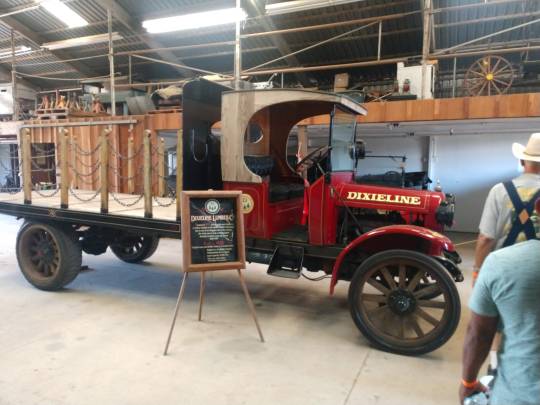
Nestled in the rolling hills of Vista, California, is a unique museum that pays tribute to the technological advancements of the past. The Antique Gas and Steam Engine Museum, established in 1969, is a haven for enthusiasts of antique engines, farm machinery, and equipment. With its extensive collection of artifacts, interactive exhibits, and live demonstrations, the museum offers visitors an opportunity to step back in time and experience the ingenuity of early American inventors and engineers.
The museum covers a sprawling 55-acre property and is home to more than 1,000 artifacts from the late 1800s to the mid-1900s. Its mission is to preserve and educate the public about the advancements of the past and to inspire future generations of engineers and innovators. Visitors to the museum can explore exhibits that showcase antique engines, tractors, steam-powered machines, and agricultural equipment.

One of the highlights of the museum is the collection of antique engines, which includes rare and unique models from the late 1800s and early 1900s. The engines, which range from small single-cylinder models to massive 12-cylinder behemoths, are displayed in a large outdoor exhibit area. Visitors can marvel at the intricate mechanisms and engineering that went into these early engines, which paved the way for modern-day power plants and internal combustion engines.
Another exhibit that draws visitors to the museum is the steam engine collection. These machines, which run on steam power, were once the backbone of early American industry. The museum boasts an impressive collection of steam-powered engines, including a working 1912 Case 110 horsepower steam engine, which is the largest operating steam engine of its kind in the world.

In addition to the engines, the museum also features an extensive collection of tractors and other farm machinery. These artifacts, which date back to the early 1900s, offer a glimpse into the hard work and ingenuity of early American farmers. Visitors can see how these early machines revolutionized farming practices and helped to increase crop yields and improve efficiency.
One of the unique features of the museum is the live demonstrations that take place throughout the day. Visitors can watch as the museum's staff fires up the antique engines and tractors, and witness firsthand how these machines operate. The demonstrations are not only informative but also entertaining, as visitors are treated to the sights, sounds, and smells of early American industry.
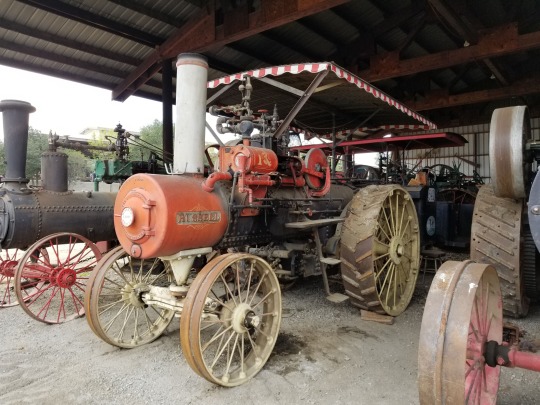
The museum also offers a variety of educational programs and workshops for visitors of all ages. Children can participate in hands-on activities and learn about the workings of simple machines, while adults can attend workshops on blacksmithing, metalworking, and woodworking. The museum also hosts an annual Antique Engine and Tractor Show, which draws thousands of visitors from around the country.
The Antique Gas and Steam Engine Museum is more than just a collection of artifacts; it is a living testament to the ingenuity and resourcefulness of early American inventors and engineers. The museum's mission to preserve and educate the public about the advancements of the past is critical in inspiring future generations of innovators and engineers.
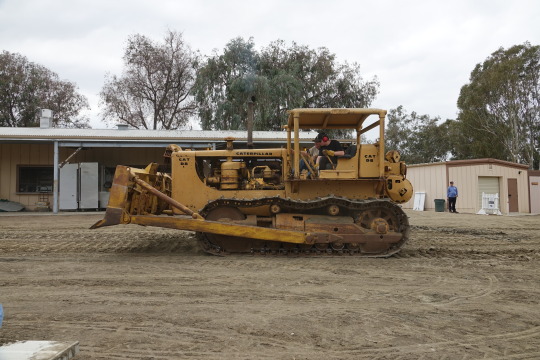
As technology continues to advance at an unprecedented pace, it is easy to forget the importance of the past. The Antique Gas and Steam Engine Museum serves as a reminder of how far we have come and the progress that has been made in the fields of engineering and technology. By preserving these artifacts and educating the public, the museum ensures that the innovations and inventions of the past are not lost to time.
In conclusion, the Antique Gas and Steam Engine Museum in Vista, California, is a must-visit destination for anyone interested in the history of engineering and technology. With its extensive collection of antique engines, tractors, and farm machinery, as well as
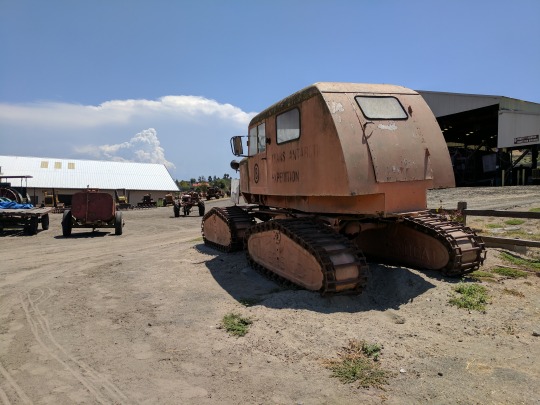

The Antique Gas and Steam Engine Museum Video
youtube
The Antique Gas and Steam Engine Museum Location
MEMBER SPOTLIGHT
Silver Olas Carpet Tile Flood Cleaning
1278 Longfellow Rd, Vista, CA 92081
(760) 230-5252
If you are looking for Travertine polishing in Vista
As the finest provider of carpet cleaning in the area, They have established an excellent reputation for prompt, attentive service, and results that few competitors can match or exceed. From steam cleaning to dry cleaning, they will take care of your carpets with expert stain removal, eco-friendly soaps, and equipment exceeding all industry standards.
DRIVING DIRECTION
2 notes
·
View notes
Text
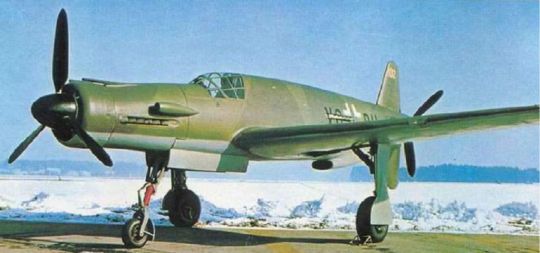
-A Dornier Do 335 Pfeil on a snowy runway, some time in 1944 or '45. | Photo: Luftwaffe
FLIGHTLINE: 181 - DORNIER DO 335 PFEIL ("ARROW")
Initially designed in response to a request for a Schnellbomber, the Do 335 was reconfigured into a multi-role aircraft, though only a few were completed before Germany surrendered.
Claude Dornier founded the Dornier Flugzeugwerke ("Aircraft factory") in 1914, and was renowned for building large, all-metal flying boats as well as land-based passenger aircraft between the Great War and WWII. These included the record-breaking Do 16 Wal ("Whale") of 1924, the Do X of 1929, and the Komet ("Comet") and Merkur ("Mercury"), a favorite of Lufthansa and SCADTA in Colombia, as well as several South American militaries. A feature of many Dornier aircraft were tandem engines, a tractor and a pusher motor placed back to back. This arrangement allowed an aircraft to enjoy the extra power of having multiple engines without the associated drag of having multiple tractor installations. It also alleviated the issue of asymmetric thrust in case of an engine failure.
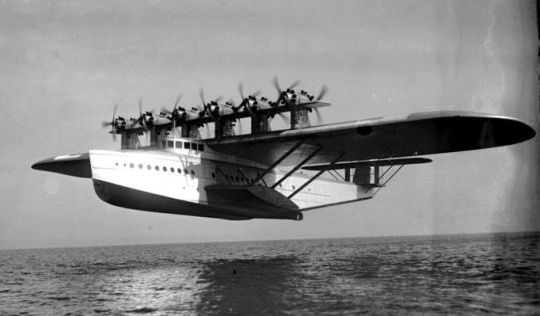
-A Do X in flight, circa January 1932. This was one of a number of Dornier flying boats to have a tandem engine configuration. | Photo: German Federal Archives
DEUTSCHLAND PFEILE
What became the Do 335 originated in 1939, while Dornier was working on the P.59 Schellbomber ("high-speed bomber"), which would have carried and equivalent load to a Ju 88 or Me 410, but featured a tandem engine arrangement. Work on the P.59 was cancelled in 1940, but Dornier had already commissioned a test aircraft, the Göppingen Gö 9, to test the feasibility of connecting a pusher prop via an extended drive shaft. The Go 9 was based on the Do 17 bomber, but scaled down 40% and with a cruciform tail. The test plane validated Dornier's designs, though the eventual fate of the Go 9 is not known (likely though, it was destroyed by Allied bombing or recycled).
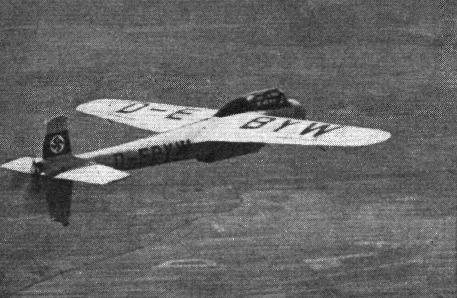
-The Göppingen Gö-9 motor glider, designed by Wolf Hirth. flying c.1941. | Photo: Flightglobal
The P.59's general design was resurrected in 1942 when the RLM requested a high-speed bomber with a 1,000kg payload. Dornier submission, designated the P.231, was awarded a development contract and the model number Do 335. Late in 1942, the requirements were changed from a Schnellbomber to a multirole fighter, which resulted in extensive delays while the designs were updated.
FLUGZEUGSPEZIFIKATIONEN
The Do 335 was 13.85m long, with a wingspan of 13.8m and a height of 5m. Empty, the plane weighed 7,260kg, while at max TO the weight was 9,600kg (10,000kg for the two-seat trainers and night fighter variants). Power was provided by two Daimler-Benz DB 603E-1 liquid-cooled V-12s developing 1,324kW each. Due to the situation in late-war Germany, the engines were fitted to run on 87 octane "B4" lignite-derived synthetic fuel, and MW50 boost was also available for additional speed. The basic fighter/bomber variant was armed with a singe 30mm MK 103 cannon firing through the spinner and two 20mm MG 151/20 autocannon mounted in the front engine cowl and synchronized to fire through the prop disc. A single 500kg bomb could be carried internally, and two pylons on the wings could be fitted with bombs, gun pods or drop tanks, with a total load of 100kg. During flight tests, the Do 335 hit 763kmh with boost (686kmh without), making it the fastest production fighter the Luftwaffe fielded during WWII. Under single-engine operations, the plane could still fly at 563kmh. Service ceiling was 11,400m, and under ideal conditions the plane could climb to 8,000m in 14 minutes 30 seconds. Due to concerns over a pilot striking the dorsal fin or the rear prop (a common concern in pusher designs before ejector seats became common), explosive charges would sever the fin and propeller before the pilot would bail out.

-Orthograph of the Do 335 A-1. | Illustration: Richard Ferriere

-Cutaway drawing of the Pfeil showing the engines, linkages, and landing gear actuators. | Illustration: Dornier

-Mounting locations of the 335's guns and associated equipment. | Illustration: Dornier
Maiden flight of the Do 335 V1 prototype was on 26 October 1943. A total of 27 flights were made with the V1, which uncovered a weakness in the landing gear, and issues with the main landing gear wheel-well doors saw them removed for the majority of the flights. The second aircraft, V2, first flew on 31 December 1943, and featured uprated DB 603A-2 engines as well as aerodynamic changes informed by the V1's test flights as well as wind tunnel tests. Maiden flight of the V3 pre-production aircraft was on 20 January 1944, which was fitted with DB 603G-0 engines, which produced 1,400kW at take off. The V3 was also fitted with two rear-view mirrors, alleviating blind spots caused by the location of the aft engine. A total of ten preproduction aircraft were then ordered, and in January the RLM ordered five more prototypes of the night fighter variant, later designated the A-6. By war's end, at least 16 prototypes of the Do 335 and related programs had flown, accumulating some 60 flight hours.

-The Do 335 V1 during testing in 1943 or '44. | Photo: Luftwaffe
Production of the Do 335 was given maximum priority under Hitler's Jägernotprogramm (Emergency Fighter Program), issued on 23 May 1944, and the competing He 219 Uhu ("eagle-owl") Nachtjäger theoretically freed up needed DB 603 engines for the Pfeil, but in practice Heinkel continued production of the 219A. Dornier's factories in Friedrichshafen and Munchen were anticipated to produce 120 and 2,000 Do 335s, of various configurations, by March 1946, but an Allied attack on Friedrichshafen destroyed tooling for the Pfeil, which resulted in a new line being set up in Oberpfaffenhofen. The first preproduction Do 335 A-0 model was delivered in July 1944, and construction of the first production A-1 model began in late 1944. As the war progressed, various models of the Do 335 proliferated (as happened often with late-war aircraft programs) as the Nazis sought to turn back the Allied forces:
Do 335 A-2: single-seat fighter-bomber aircraft with new weapon sights, later proposed longer wing and updated 1,471 kW (1,973 hp) DB603L engines.
Do 335 A-3: single-seat reconnaissance aircraft built from A-1 aircraft, later proposed with longer wing.
Do 335 A-4: single-seat reconnaissance aircraft with smaller cameras than the A-3
Do 335 A-5: single-seat night fighter aircraft, later night and bad weather fighter with enlarged wing and DB603L engines.
Do 335 A-6: two-seat night fighter aircraft, with completely separate second cockpit located above and behind the original.
Do 335 A-7: A-6 with longer wing.
Do 335 A-8: A-4 fitted with longer wing.
Do 335 A-9: A-4 fitted with longer wing, DB603L engines and pressurized cockpit.
Do 335 A-11/12: A-0 refitted with a second cockpit to serve as trainers.
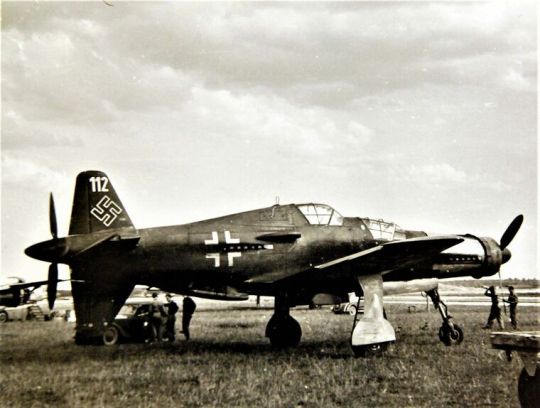
-A Do 335 A-12 trainer, known as the Ameisenbär ("anteater"), late in the war. | Photo: Luftwaffe
Do 335 B-1: abandoned in development.
Do 335 B-2: single-seat destroyer aircraft. Fitted with 2 additional MK 103 in the wings and provision to carry two standard Luftwaffe 300 litre (80 US gal) drop tanks.
Do 335 B-3: updated B-1 but with longer wing.
Do 335 B-4: update of the B-1 with longer wing, DB603L engine.
Do 335 B-6: night fighter.
Do 335 B-12: dual-seat trainer version for the B-series aircraft.
Do 435: a Do 335 with the redesigned, longer wing. Allied intelligence reports from early May 1945 mention spotting a Do 435 at the Dornier factory airfield at Lowenthal.
Do 535: actually the He 535, once the Dornier P254 design was handed over to Heinkel in October 1944; fitted with jet engine in place of rear piston engine.
Do 635: twin-fuselaged long-range reconnaissance version. Also called Junkers Ju 635 or Do 335Z. Mock up only.
P 256: turbojet nightfighter version, with two podded HeS 011 turbojet engines; based on Do 335 airframe.
In April 1945 the Allies captured the Oberpfaffenhofen factory in late April 1945, capturing 11 A-1 fighter/bombers and 2 A-12 trainers. That same month, a flight of four RAF Hawker Tempests, led by French ace Pierre Clostermann, encountered an unknown model of Do 335 over northern Germany at low altitude. The Pfeil pilot began evasive maneuvers, but Clostermann opted to not give chase as the enemy plane displayed superior speed. At the time of the German capitulation in 1945, 22 Do 335A-0, A-1 and A-11/12 aircraft were known to have been completed.

-Dornier Do 335 aircraft on the runway at Oberpfaffenhofen just after the end of the Second World War. | Photo: USAAF
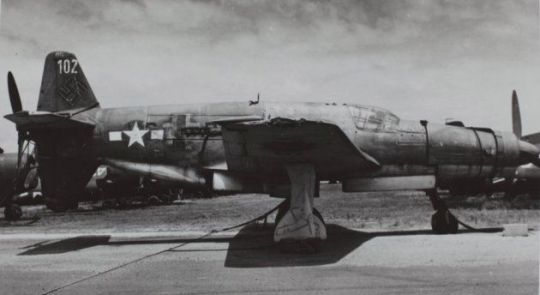
-A Do 335 after being captured by the US, with American markings painted over the Luftwaffe ones. | Photo: Charles Daniels Collection/SDASM Archives
At least two Do 335s were brought to the US under Operation LUSTY, with one, Do 335 A-0, designated A-02, with construction number (Werknummer) 240 102, and Stammkennzeichen ("factory radio code registration") VG+PH being claimed by the Navy for testing. The aircraft was transported on HMS Reaper along with other captured German aircraft, then shipped to the Navy's Test and Evaluation center at NAS Pax River. Another Pfeil was tested by the USAAF at Freeman Field in Indiana, but nothing is known about its fate. In 1961 VG+PH was transferred to the Smithsonian Institution, though it remained outside at NAS Oceana until 1974, when it was shipped back to the Dornier factory in Oberpfaffenhofen for restoration. Over the next year, volunteers from Dornier (some of whom worked on the aircraft originally) found that the explosive charges meant to sever the tail and aft prop were still installed and live, thirty years later. After work was completed the aircraft was placed on display at the Hannover Airshow from 1 to 9 May 1976, and afterwards it was on loan to the Deutsches Museum until 1988. The aircraft was shipped back the States after that, and is now on display at the Udvar-Hazy Center along with other German aircraft brought over during Lusty like the only known Ar 234 Blitz jet bomber and the partially restored He 219A Uhu.
#aircraft#aviation#avgeek#airplanes#airplane#aviation history#ww2 history#ww2 german aircraft#ww2 aircraft#ww2#ww 2 aircraft#ww 2#wwii history#wwii aircraft#wwiii#ww ii#ww ii aircraft#secret project#secret weapons of the Luftwaffe#luftwaffe#wonder weapons
39 notes
·
View notes
Text
Part I - Christie suspension
The Christie suspension is a suspension system developed by J. Walter Christie for his tank designs, utilizing bellcranks and springs instead of common for the time leaf spring suspension. It allowed for much greater speeds (M1928 could achieve 68km/h on tracks and 110 km/h on wheels!), better cross-country performance and driving without tracks.

Christie Suspension as used in his 1928 patent; Made by Alexpl on Wikipedia; [Source]
Such suspension was first used in Christie's M1928 and later M1931 tanks. Of these, 2 prototypes and 7 production models were built for US Army (designated Medium Tank, Convertible, T3) and further 2 were bought by Soviet Union (although those were without turrets). In 1936 Britain bought second-hand American T3 tank as a base for Cruiser Mk III. Poland attempted to buy blueprints and production license of M1928, but it was never received.

M1931 tank during demonstration. J. Walter Christie stands in the turret; [Source]
Part II - BT Series
In early 1930's 2 M1931s without turrets were bought by Amtorg (soviet trade organization) and sent to Soviet Union as "agricultular tractors". Delivered to Kharkiv Komintern Locomotive Factory and designated BT (Bystrokhodnyy tank, lit. "fast-moving tank"; later renamed BT-1), they were base for series of light tanks used by russians until final weeks of Second World War and direct predecessors of T-34 tank. Some production versions of later designs (namely BT-5 and BT-7) used T-26 turrets.

BT-5 on wheels in Kubinka Tank Museum in Russia; Picture taken by Mike1979 Russia on Wikipedia; [Source]
Part II and a half - T-26
T-26 is a Soviet light tank, development of british Vickers Mark E light tank. Over 10 300 units were produced between 1931 and 1941. Its history and many variants demand its own post, which I'm gonna make... someday.
Part III - 10TP
10TP was a cruiser tank developed by Poland, with modified Christie suspension (as Poland had no blueprints and licence for original Christie tank) and reused turret of 7TP. Designation most likely meant "10 tons Polish" and followed trend of understating weight of the tank. Development began on 10 March 1935 and ended in May 1939 with presentation for army officials. Due numerous technical difficulties project was cancelled in favor of 14TP, and prototype was destroyed during September Campaign.

10TP prototype in Experimental Workshop; [Source]
Part IV - Annotations and sources
Christies's tanks were never used in combat. There's also no reliable information about 10TP being used during September Campaign;
4 out of 7 american M1931s were rearmed with heavy machine gun, renamed "Combat Car T1" and assigned to 1st Cavalry Regiment;
Sources:
https://en.wikipedia.org/wiki/Christie_M1931
https://en.wikipedia.org/wiki/10TP
https://en.wikipedia.org/wiki/Christie_suspension
https://en.wikipedia.org/wiki/BT_tank
https://en.wikipedia.org/wiki/T-26
http://derela.pl/en/10tp.htm
If i had a nickel for every eastern european interwar nation that developed a fast tank with Christie suspension and turret reused from locally produced version of Vickers Mark E, i would have 2 nickels.
Which isn't a lot, but it's weird it happened twice.
#it's my first time writing something like this#so comments and criticism are welcome#tanks#wwii#10tp#bt 7#bt 5#j walter christie#long post#polish tanks#soviet tanks#american tanks
3 notes
·
View notes
Text
The Bros Visit the Human World
︵‿︵‿︵‿︵‿︵
You bring the bros to the human world for a little get-away and they develop some interesting habits.
︵‿︵‿︵‿︵‿︵
Lucifer
He’s the restless one that doesn’t sleep well. It takes a night or two to get comfortable and sleep normally.
Lucifer will probably be the first one up. Not only out of habit, but you’re in the human world so he’ll see the sun again
Being away from Diavolo and the responsibilities actually makes him seem like a stranger. Everyone forgets who he is outside of that because he’s so dedicated.
If you’re around a lot of nature, he’ll just casually stroll around. Almost like he’s forgotten what grass, trees, and flowers look like. He loves to spend time in the sun and just breathe the air.
Have pets? He’s partial to cats and well-behaved dogs.
Surprisingly, he’ll be the type to chase birds off of anything half-wounded or put birds back into their nests
At some point you’ll find him on the roof, wings out and sunning
Take him to livestock stores or somewhere like Tractor Supply Co. and he’ll be super tempted to smuggle a baby chick out in his pocket.
Loathes most human TV. Can’t bring himself to be interested until you bust out bible-history related documentaries. If he finds one he’ll take control of the TV, watch it all, and rip it to pieces.
Kind of develops a complex about it. “What would these humans know?! They’ve only been around for, what, forty years? Try five thousand!”
Take him by the coffee shops or smoothie shops to try decadent treats! He secretly likes them!
Mammon
Sleeps easier than Lucifer but has a tough time because the noises are different
If you have an open field or bigger back yard, his favorite thing to do is stand there and watch birds come to him. It surprises him that he can summon more than crows
Boy will definitely throw on a sunhat (or some cool glasses) and ask you what you feed birds around your place. Stands out in your yard throwing bird seed like the birds are starving and he’s got a million bags.
The type to fight squirrels and chase them out of your yard or away from feeders because “It’s not FOR you!”
If you live somewhere more laid-back he’ll feel very restless. He’s drawn to bigger, busier places.
IMMEDIATELY asks you about restaurants and things to do (”What’cha got? What’s good? Anything fun around here?”)
Gets super frustrated by shows like Storage Wars but it eerily good at appraising the value of stuff at a glance. Often guesses the real value of the objects
Show him Antique Roadshow. He’ll LOSE. HIS. SHIT.
He’ll ask to go by places like pawn shops and jewelers to just look at the different things humans trade or want to save up for. Can probably get discounts on the stuff.
Bring this guy when shopping for jewelry. He has an innate gift for appraising and can see flaws. He knows when you’re being played.
Want to be a little mean? Get those chocolate treasure chest coins and give one to Beel first. Mammon might just have a heart attack.
Definitely goes on a rant about how making chocolate money is wrong. (”Why make a currency you can’t spend?!”)
Make the visit special by getting some type of matching jewelry--earrings, rings, necklaces--and he’ll wear it around.
Take him by pet stores where they’ll let the birds out of cages, he’ll make kissy noises and love on all of them. Will definitely try to smuggle one out.
He’ll spend whole days in parks when he realizes you can park it on a bench and feed birds. Birds that don’t always get food!
Don’t show him water fountains. He doesn’t get the concept of people tossing coins in and will definitely try to take them by posing as a cleaner or something
Taking him by a museum is a 50/50 gamble. He’s genuinely interested in the displays and setup but might try to steal something
Do you have a way to watch The Road to El Dorado? Show it to Mammon. He’ll love it.
Leviathan
Unless you live by some cute cafes, comic book stores, or video game retailers he probably won’t do much on his visit
Do you have a pool? He changed his mind. Might gripe about the chlorine messing with his skin though.
If you only have access to a community pool he refuses to do anything with it
Take him to the beach if you live near one. He’ll ALWAYS go for ocean water!
Because the Devildom is the Devildom, I bet they don’t have Ghibli movies. Maybe they have knock-offs, or they’re considered rare because they’re human world related, but have a Ghibli marathon with him! He’ll love it! It won’t be Ruri-chan levels of love, but he’ll stan and want to buy some stuff
Can you make boba tea at home or swing by a coffee shop that makes a close substitute? Take him! He’ll like it! Levi may complain about it not being authentic but he’ll secretly appreciate it
He likes savory food and junk food so take him by a dollar store and get some cheap chips and sodas. It’ll be interesting to try. Maybe he can make a Deviltube video about trying human food!
Levi also strikes me as someone who would like nachos, so maybe grab him some nachos!
Do they know about the Doritos and Mountain Dew thing in the Devildom? He might want those. (”Look, I’m like the human gamers!”)
Levi runs a little colder than his brothers (by Devildom standards) so take him around to feel on blankets and maybe get one to take back to the Devildom.
Satan
Has a great love for books (obviously) and a great disdain for Devildom bookstores that charge an arm and a leg for human finds. TAKE HIM BY BOOKSTORES AND LET HIM LIVE IN HIS NATURAL ENVIRONMENT!
The type to bring an extra suitcase just for books
Is actually quite a homebody because he has no connections in the human world (besides you), so he’s fine to sit and read his new finds.
Do you have books at home? What are your favorites? He’ll read them, too, while he’s here
Show him some kind of crime channel or crime YouTuber and he’s 100% obsessed. Binges them like Netflix
Will wave you over and demand you sit, tangling your legs together as you lean back and speculate on who the murder is and what happens since most of those TV episodes are an hour long
Loves anything psychological-based. Wants to understand why people do things and how they work. Show things like Criminal Minds and Mind Games. He’ll be SUPER interested.
Do you have cats? You’ll see Satan whispering them and holding them against his shoulder. He’s in love and might be planning to steal your cat.
Taking him by animal shelters makes him a little sad but he’ll be glad to play with all the cats at one time.
Don’t tell him that, to most humans, Lucifer and Satan are the same figure in the Bible. He just might lose his shit.
Does your town have history/mystery tours? Take him! It’s a two-in-one and he loves it! History and culture, mystery and crime!
Show Satan Cinderella. He’ll get the BIGGEST laugh out of the cat being called Lucifer.
Asmodeus
Like Mammon, will ask you about aesthetic places and things to do
In a rare moment of not hating Mammon, the two will gossip at the jewelry stores and be really critical. Mammon stops Asmo from making bad purchases
Show him around some makeup stores! He’d LOVE to see human products!
If you take him by ANY store with clothes, he will look, pick, feel, analyze, and try things on for the hell of it. It will be an all-day thing
Human fashion takes off more than he expected on the Devilgram, so he’ll buy a few things.
When he realizes makeup stores give free makeovers, he’ll use that to his advantage. Especially by charming people
Goes on a small kick of charming people to get what he wants because Lucifer only ever told him he couldn’t do it to YOU. It’s a new level of fawning and attention and he eats it up
If he sees a cute Starbucks drink on TV, he wants it.
If you show him Pinterest or Instagram, he’s glued to a device and saving things.
By the time everyone goes back to the Devildom he has a tiny notebook full of ideas and details--ways to recreate it in the Devildom
Gets several modeling offers and you (or one of the bros) has to pull him away, It’s not happening.
Unexpectedly into unboxing videos and calligraphy. Lives for pretty hand writing and is fascinated by bullet journaling even though he’s too lazy to maintain one
Show him soap operas/dramas and celebrity entertainment channels. He won’t know what to believe.
If he sees shows like Jerry Springer, Maury, Jeremy Kyle, or Judge Judy he live-streams them like ‘can you believe what crazy things happen in the human world?!’
Beelzebub
The dollar store is his heaven! ALL THIS FOOD FOR A DOLLAR?!
I personally think that human food is less calorically dense so he’ll need to eat a lot. Take him by fast food places that have cheap dollar menus or five dollar deals
If you go to a restaurant with a ‘finish in ‘x’ amount of a minutes and it’s free!’ do it. He’ll set a record
Beel learns about all you can eat buffets and gives you puppy eyes until you take him to one. At least you’ll get your money’s worth!
Don’t take him by a real grocery store. He’ll bankrupt you. Or eat all the free samples.
He’s interested in cooking shows but if he watches them you’ll have to clean up a lot of drool, give him something to eat while he’s watching, or stop him from absently grabbing the closest thing and trying to eat it
Is super into renovation shows and technical shows where people work with their hands. It’s like sports of the mind.
Not as interested in watching American football because he’ll critique it too much. Any other sport, he’ll find it interesting and want to know how it works.
Show him old Olympic footage. He’s surprised at the variety of sports and will watch the whole thing
Will also enjoy Ghibli movies. How do they make food look like that?!
This boy is a Disney princess in a demon body. If he sees any critters while he’s out and about (ANY), he’ll want to try and feed it or pet it
Bugs are drawn to him. He especially likes caterpillars and butterflies.
Beel likes to hunt for ladybugs.
Likes to “donate” to ant hills and watch them work,
Likes to watch nature documentaries about different animals
If you take him to the zoo, he’ll marvel at the different animals. Wants to wrestle a tiger and the bigger animals to see if he’ll win. It looks “fun.”
Belphegor
When he hears about mattress stores, that’s his thing. That’s what he wants you to do together. Belphie will literally lay on as many mattresses as possible and judge them
He may not have a hard time sleeping as long as he has his favorite pillow, but, for kicks, show him ASMR. Beel’s not the only one who drools!
Will definitely fall asleep outside in the sun. Any place is a good place for a nap, and to look up and see clouds is special
Spend a night outside under the human sky. It’s constellations and things he only ever gets to see in the star room
Will watch just about anything on TV. He’ll say he doesn’t have a preference but he likes those happy, soft movies that have gentle endings where everything turns out okay. Actually cries a little.
If he learns what Snorlax is from Pokemon, he’ll want one. A big Snorlax plushy to cuddle and sleep on/with!
If he hears the word “demon” uttered on TV he’s instantly hooked. What stupid thing do these humans think? THAT’S their version of a demon?!
Can you take him to see real cows? He’d really like that.
The type to make flower chains in the grass because he’s bored. Gives his first one to Beel and falls asleep before he can make another one.
Loves milkshakes unironically. Will slink out of bed and come along on any errands/brother outings if he can get one out of you.
#Obey me!#Lucifer x Reader#Mammon x Reader#Levi x reader#Leviathan x Reader#Satan x Reader#Asmodeus x reader#Beelzebub x Reader#Belphegor x Reader
525 notes
·
View notes
Text
Experience Scottsdale in 2024 – Scottsdale Tractor Tours Await You!
Scottsdale, Arizona, is a vibrant destination that perfectly blends natural beauty with urban sophistication. In 2024, the city has upped its game with one of the most unique experiences you’ll find – Scottsdale Tractor Tours. Imagine exploring the picturesque landscapes while riding aboard a charming tractor, soaking in the sunshine and culture of this stunning destination. Ready to learn more? Let’s dive in!

Why Scottsdale is the Perfect 2024 Destination
A Blend of Nature and Luxury
Scottsdale boasts breathtaking desert landscapes paired with world-class resorts and spas. Whether you’re into hiking rugged trails or lounging in a luxurious poolside cabana, this city has it all.
Rich Cultural Heritage
From Native American art galleries to historical museums, Scottsdale offers a deep dive into the culture and history of the American Southwest.
Vibrant Activities for All Ages
No matter your age or interests, Scottsdale delivers. From adrenaline-pumping adventures to serene golf courses, there’s something for everyone here.
What Are Scottsdale Tractor Tours?
Overview of Tractor Tours
Scottsdale Tractor Tours provide a leisurely, immersive way to explore the area. These tours take you through some of the city’s most scenic spots aboard a traditional tractor wagon.
How They Combine Fun with Education
Not only do you get to marvel at stunning views, but you also learn about Scottsdale’s history, wildlife, and agriculture from friendly, knowledgeable guides.
Popular Stops Along the Way
Expect to visit iconic landmarks, lush farms, and hidden gems that only locals know about.
Top Reasons to Try Tractor Tours
Unique Sightseeing Opportunity
There’s no better way to take in the sights than by tractor. It’s slow enough to enjoy every detail but exciting enough to keep you entertained.
Family-Friendly Adventure
Kids and adults alike will love the novelty of riding a tractor. It’s an experience the whole family will talk about for years.
Eco-Friendly and Sustainable Travel
These tours emphasize sustainability, ensuring that tourism supports the local environment rather than harming it.
What to Expect on a Scottsdale Tractor Tour
Scenic Routes
Traverse picturesque landscapes that showcase the best of Scottsdale, from cacti-filled deserts to lush green farms.
Interaction with Local Guides
Your guides bring the journey to life with fascinating stories, historical insights, and even a few jokes.
Delicious Food and Drink Stops
Many tours include stops at local eateries where you can sample Arizona’s finest flavors.
Highlights of Scottsdale Tractor Tours in 2024
New Routes and Experiences
This year, expect fresh routes that explore even more of Scottsdale’s hidden treasures.
Special Seasonal Tours
Don’t miss themed tours like springtime flower routes or fall harvest rides.
Exclusive Behind-the-Scenes Access
Get a peek at working farms, wineries, and artisanal craft hubs.
Tips for Planning Your Tractor Tour
Best Times to Visit
The cooler months from October to April offer the most comfortable weather for outdoor adventures.
What to Wear and Bring
Wear comfortable clothes and sturdy shoes. Don’t forget sunscreen, hats, and plenty of water.
Booking Your Tickets in Advance
Tours can fill up quickly, so it’s a good idea to book early to secure your spot.
Exploring Beyond the Tractor Tours
Other Outdoor Adventures in Scottsdale
Try hot air ballooning, horseback riding, or hiking Camelback Mountain for a change of pace.
Local Dining and Shopping Hotspots
Savor local flavors at Old Town Scottsdale’s eateries or shop for unique finds at artisan boutiques.
Luxury Resorts and Spas
End your day by relaxing in one of Scottsdale’s renowned spa resorts.
How Scottsdale Tractor Tours Support Local Communities
Promoting Local Agriculture
By visiting local farms, you’re directly supporting Arizona’s agricultural economy.
Boosting Tourism Economies
These tours drive (or rather, roll!) tourism dollars straight into the community.
Supporting Sustainable Practices
Tours highlight eco-friendly methods, making every ride guilt-free.
Conclusion
Scottsdale Tractor Tours are more than just a ride – they’re an experience. Whether you’re a local or a first-time visitor, these tours offer a fresh perspective on everything Scottsdale has to offer. Make 2024 your year to hop aboard and create unforgettable memories!
FAQs
1. What is the best time of year for Scottsdale Tractor Tours? The cooler months from October to April are ideal.
2. Are these tours suitable for kids? Absolutely! Tractor tours are family-friendly and great for all ages.
3. How long does a typical tractor tour last? Most tours last about 1.5 to 3 hours, depending on the route.
4. Do I need to book in advance? Yes, it’s recommended to book ahead, especially during peak seasons.
5. What makes tractor tours unique compared to other Scottsdale experiences? They offer a perfect mix of relaxation, education, and adventure, all at a leisurely pace.
#scottsdale bachelorette#scottsdale tours#fun things to do in scottsdale#inspiration#adventure#original photographers
0 notes